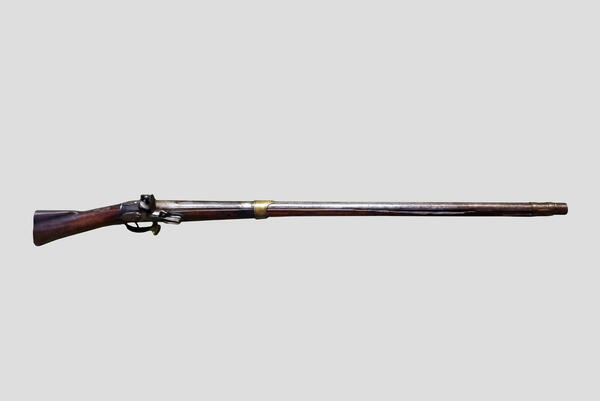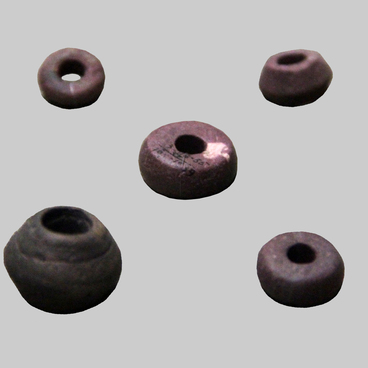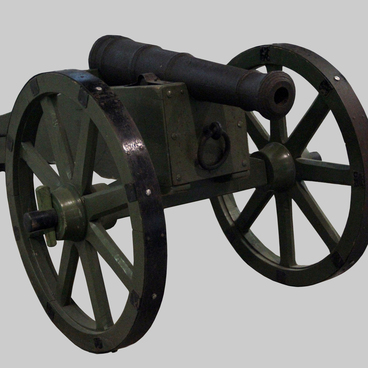A flintlock is a special mechanism for igniting gunpowder in firearms. Sparks in it are generated as the flint strikes the steel. This type of lock was invented in the Middle East in the early 14th century. The weapon in which this device was used was called flintlock.
The Turkish flintlock became first known in Europe in 1504, in Spain. The chronology of the highest prohibitions on the use of a flintlock allows us to trace its further spread. The last time it was banned under pain of death by King Louis XIV of France in 1645. But this did not mean that the king found something reprehensible in the production, sale, storage, carriage and use of flintlock weapons under the laws. The ban applied only to the musketeers.
In the 17th century, soldiers received a salary, but had to buy weapons themselves. The weapon was determined by the contract. A musketeer with a musket that did not meet the requirements was not considered equipped, and was regarded as a deserter. The use of flintlock muskets was prohibited by the regulations.
The flintlock was based on the earlier wheellock. In the first models, the frizzen and the flashpan lid were a single unit. A part of the trigger and firing mechanism, the sear, moved vertically and went into two notches in the cocking handle: a disk mounted on one axis with the trigger. These notches allowed the hammer to be cocked either fully or halfway. The half-cock position of the hammer was safe.
Before shooting, the trigger was fully cocked, and then pulled. The flint struck the frizzen, opening the flashpan lid and generating a spark that would ignite the powder in the flashpan. The ignited powder would then ignite the main powder charge, which was placed in the barrel together with the ball.
As flintlocks became widespread throughout Western Europe after the 1630s, national characteristics began to appear in them. Each workshop developed its own, easily recognizable style. France was the main European supplier of firearms in the early 17th century. In Scotland, where the more archaic wheellocks were preferred, true flintlocks did not appear until around 1700. Scottish pistols have always had a very characteristic look; flintlocks were installed on pistols with grips, the end of which was decorated by gunsmiths with a stylized heart or a ram’s horn.
With the advent of flintlocks, weapons became more convenient to handle: loaded weapons did not require a smoldering fuse, diminishing the impact of the weather on reliability. Moreover, now the weapon could shoot at any moment, and not only when the fuse was smoldering.
By the middle of the 17th century, the design of the flintlock was well-established and changed very little over the next century. The only innovation that appeared in some later models was the stopper. It was a small hinged arm which prevented the sear from moving when the trigger was released in the half-cock position.
The Turkish flintlock became first known in Europe in 1504, in Spain. The chronology of the highest prohibitions on the use of a flintlock allows us to trace its further spread. The last time it was banned under pain of death by King Louis XIV of France in 1645. But this did not mean that the king found something reprehensible in the production, sale, storage, carriage and use of flintlock weapons under the laws. The ban applied only to the musketeers.
In the 17th century, soldiers received a salary, but had to buy weapons themselves. The weapon was determined by the contract. A musketeer with a musket that did not meet the requirements was not considered equipped, and was regarded as a deserter. The use of flintlock muskets was prohibited by the regulations.
The flintlock was based on the earlier wheellock. In the first models, the frizzen and the flashpan lid were a single unit. A part of the trigger and firing mechanism, the sear, moved vertically and went into two notches in the cocking handle: a disk mounted on one axis with the trigger. These notches allowed the hammer to be cocked either fully or halfway. The half-cock position of the hammer was safe.
Before shooting, the trigger was fully cocked, and then pulled. The flint struck the frizzen, opening the flashpan lid and generating a spark that would ignite the powder in the flashpan. The ignited powder would then ignite the main powder charge, which was placed in the barrel together with the ball.
As flintlocks became widespread throughout Western Europe after the 1630s, national characteristics began to appear in them. Each workshop developed its own, easily recognizable style. France was the main European supplier of firearms in the early 17th century. In Scotland, where the more archaic wheellocks were preferred, true flintlocks did not appear until around 1700. Scottish pistols have always had a very characteristic look; flintlocks were installed on pistols with grips, the end of which was decorated by gunsmiths with a stylized heart or a ram’s horn.
With the advent of flintlocks, weapons became more convenient to handle: loaded weapons did not require a smoldering fuse, diminishing the impact of the weather on reliability. Moreover, now the weapon could shoot at any moment, and not only when the fuse was smoldering.
By the middle of the 17th century, the design of the flintlock was well-established and changed very little over the next century. The only innovation that appeared in some later models was the stopper. It was a small hinged arm which prevented the sear from moving when the trigger was released in the half-cock position.



